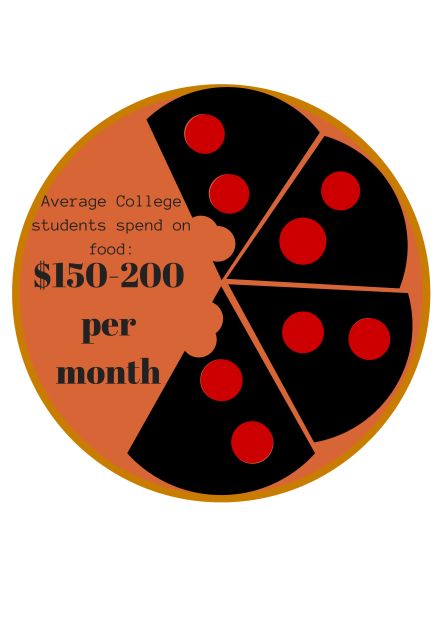
A typical college student struggles with the challenge of properly managing their money. Everyone has to pay for those expensive textbooks, loans, as well as spending money on recreational activities and on off-campus dining.
Cabrini College resides in one of the most affluent areas of the Main Line. Several attractive dining options in the area make students want to go out and get something to eat with their friends.
Sometimes, students do not even notice how much they are spending until they realize that their expenses are higher than their income.
Dining off campus on a budget plan is an option for students to properly manage their money without overspending. For those who do not know how, there are many ways to layout a budgeting plan.

On top of all the homework, sports team practices, club meetings and other activities, finding time to make a budgeting plan can be challenging.
“Mint“, a budgeting app that students can use to track their spending, is a popular budgeting app that can be downloaded from the app store on an iPhone or iPad.
The “Mint” app allows its users to keep track of their spending’s to prevent overspending in certain categories. Budgeting the amount spent on going out to eat can be tracked through this app so that users know their limit.
“I think it’s important to limit myself because eating out all the time is unhealthy. I try not to spend that much money on food because I have other expenses that I need to pay for,” Nicole Procknow, junior marketing major, said.
Depending on whether students live on-campus or if they move off campus with their friends can influence the amount they spend on food.
Students living on campus have to buy a meal plan, however, they can be pricey. Moving off of campus provides students with either buying a meal package or grocery shopping on their own.
Taking turns buying groceries and making lists before going to the grocery store can be helpful in an attempt to save money.
Students commonly spend money on food that is cheap and easy, although there are some spending hacks on how to stay healthy on a tight budget.
“I print coupons out from a website before I go grocery shopping,” Gabby Rocco, sophomore accounting major, said.
Printing out coupons and finding out what grocery stores are less expensive than others helps when buying food that tend to be pricier than others.
Students spend money on easy food because it is easy for them to get quickly. Even though it may be easier in relation to a busy schedule, that reduces the amount of money in other spending categories.
“I want to save money for other activities such as hay rides this October and on end-of-summer country concerts,” Rocco said.
“I need to have enough to pay for car insurance, gas, rent, utilities, clothes and makeup,” Jamie Swartz-Hanley, junior elementary and special education major, said.
Students consider all of the other essentials and events they want to participate in before spending money at a restaurant in order to have enough for various personal expenses, living expenses, transportation and other bills.
College is very expensive. Creating budgeting plans and smart spending habits can reduce the amount of money students spend. In order to be able to spend in several categories and stay organized, students have many opportunities to create a plan without difficulties.


